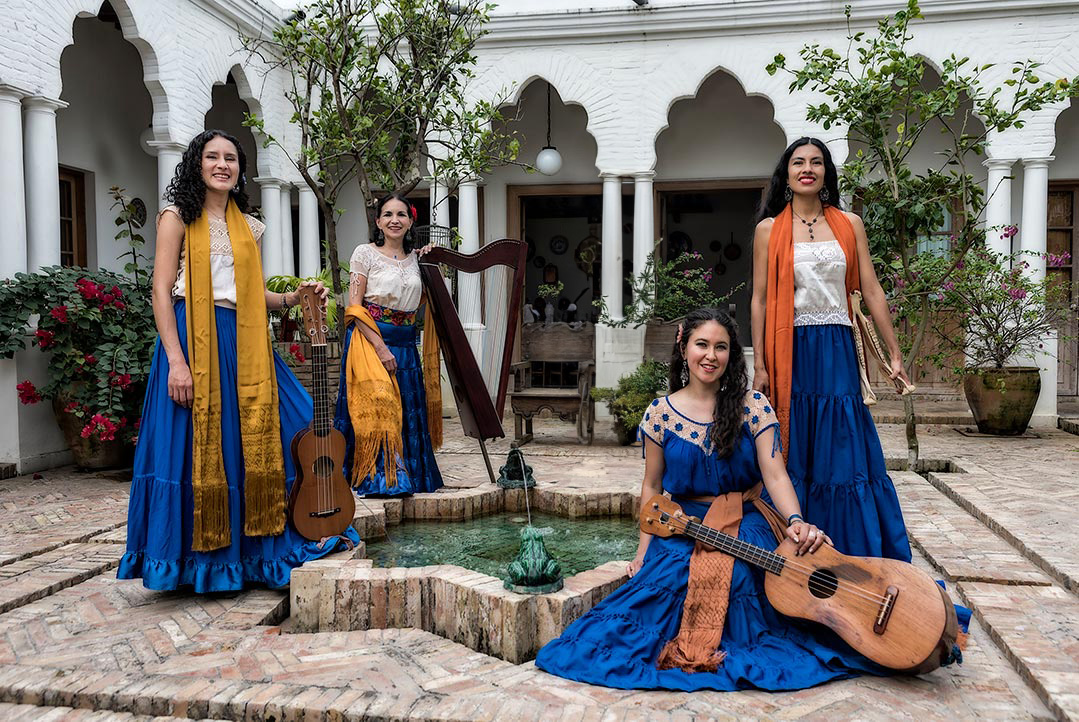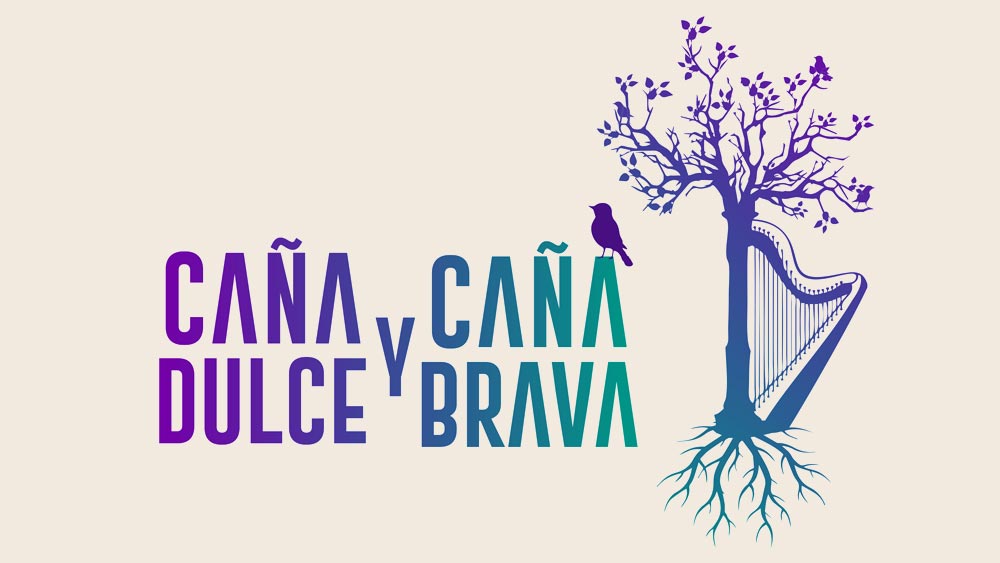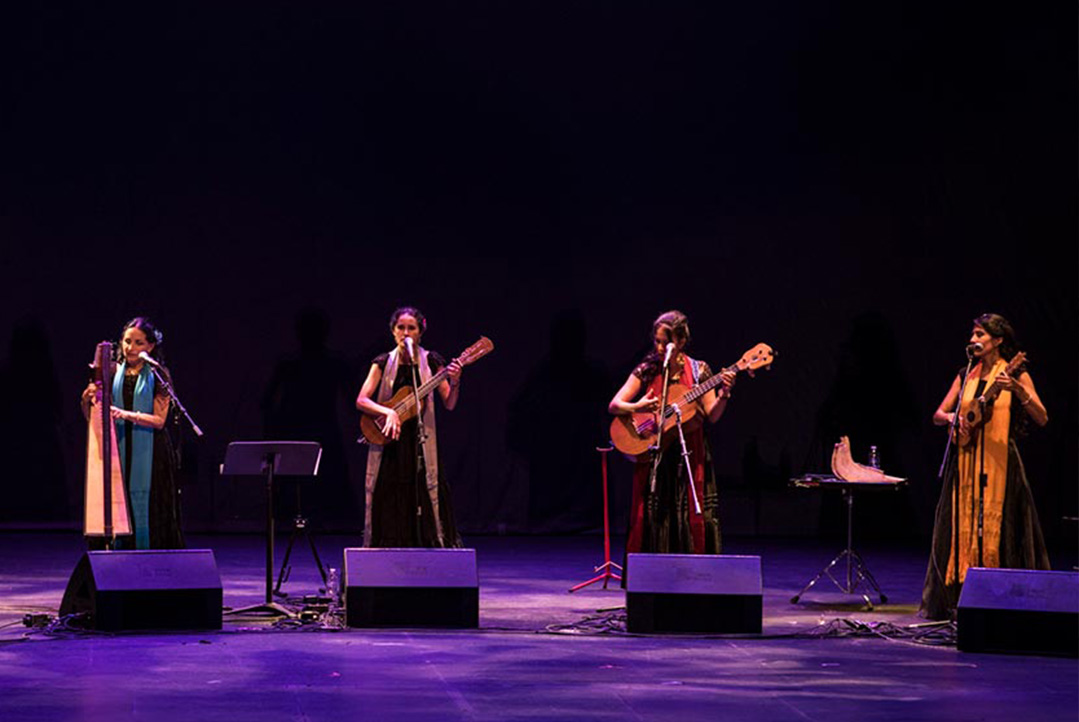About Us
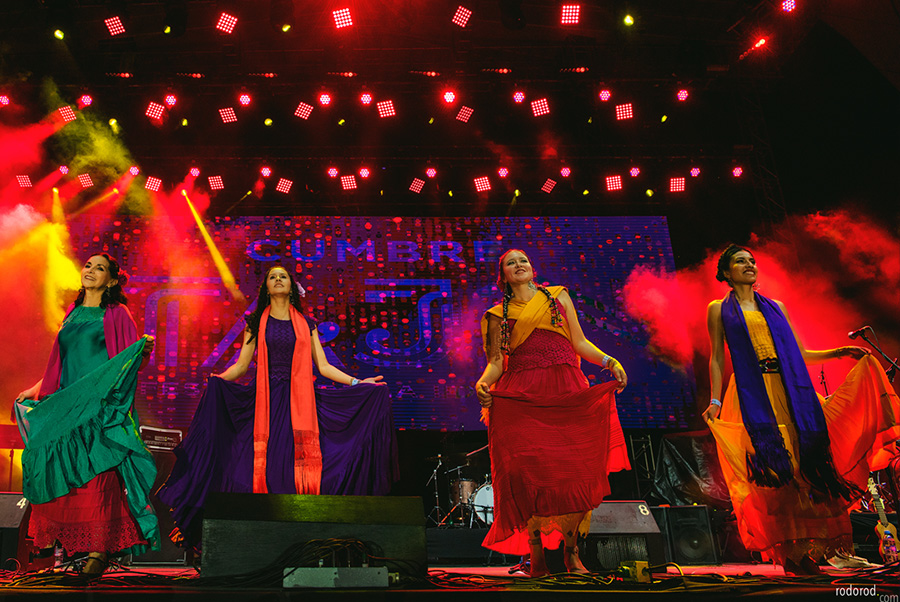
Caña Dulce y Caña Brava offers a performance which exhibits the music, poetry, dance and traditional attire of Veracruz, Mexico, interpreted by artists who are beneficiaries of the jarocho culture and noteworthy performers with years of experience on both national and international stages. The group stands out as an artistic project that highlights feminine poetry and voices. Creating an experience that connects the spectator with distinct emotions, one is taken on voyage through multiple rhythms, accompanied by traditional string instruments such as the harp and the jarana, percussion and zapateado, poetic improvisation in rhyme and the projection of visual effects. Offering an assortment of colors, textures and images to diverse and multi-generational audiences, the ensemble is defined by an original aesthetic concept that unites the traditional with the vanguard in a contemporary stage proposal.
Spreading and recreating the traditional music of Veracruz
Since its formation in 2007, the group has carried the seal of feminine strength and beauty within the traditionally masculine world of Mexican son.
The sounds of the strings interweave with the poetic messages written from a woman’s perspective, creating a facet not before seen within this musical genre.
The zapateado (percussive dance) on the tarima (wooden platform) accentuates the beat, while the band’s colorful wardrobe embellishes their musicality. Appealing instrumental landscapes include the captivating vibrations of the horse jaw, the profound and mystical harmonies of the harp, the percussive atmosphere created by the jarana, the robust rhythm of the guitarra grande, and the renaissance-sounding bowed instruments created ex profeso for the group, resurrecting extinct baroque instrumentation.
Thanks to their dedication, innovation and consistency, the group has positioned itself as a reference point for current son jarocho music. They have collaborated with well-known artists such as Lila Downs, Geo Meneses, María Inés Ochoa and La Santa Cecilia (recording “Volver a los 17” by Violeta Parra, in the Grammy nominated album “Amar y Vivir”, 2017). Furthermore, Caña Dulce y Caña Brava has represented Mexico in forums and festivales worldwide in Latin America, the United States, Canada, Africa, Asia and Europe.
Our Story
During the summer of 2007, the Encuentro de Jaraneras in Tuxtepec, Oaxaca (an area that culturally pertains to the Sotavento), brought together Adriana Cao Romero and Raquel Palacios Vega to form a duet. Motivated by their passion for the music, their lifelong friendship, and their desire to create a new sound–one defined by their sensibility and their manner of viewing the world–they aimed to create a musical space in which they felt unrestrained. Their idea was to allow the nuances of their instruments to be heard and to sing poetic versada from the feminine perspective. They wanted to demonstrate that there exist other ways of playing son jarocho. They assumed that this new proposition to gather women soneras would bring together others with similar ambitions, but to their surprise, there were no other all-female groups in the festival.
There, amongst the plains and the southern paths, the aroma of molasses permeated their sense of smell, and the wind that combed the flowers of the cañales (fields of sugar cane) caressed their faces. Inspired by Patricio Hidalgo and Chuchumbé´s son “La Caña”, they found a name that very much represented their project, one that plays with the concept of dualities, while alluding metaphorically to the complements in life, the history of the sotavento in Veracruz and the jarocha culture. Sugar cane–glory and martyrdom for rural farmers–is cultivated and harvested with such difficulty, yet also sweetens and intoxicates one’s life. The name “Caña Dulce y Caña Brava” seemed befitting as it served as an anchor to their land of origin, filling them with memories of their childhood and even a bit of nostalgia. After all, only a few years earlier, they had migrated to Mexico City with the conviction of finding professional opportunities.
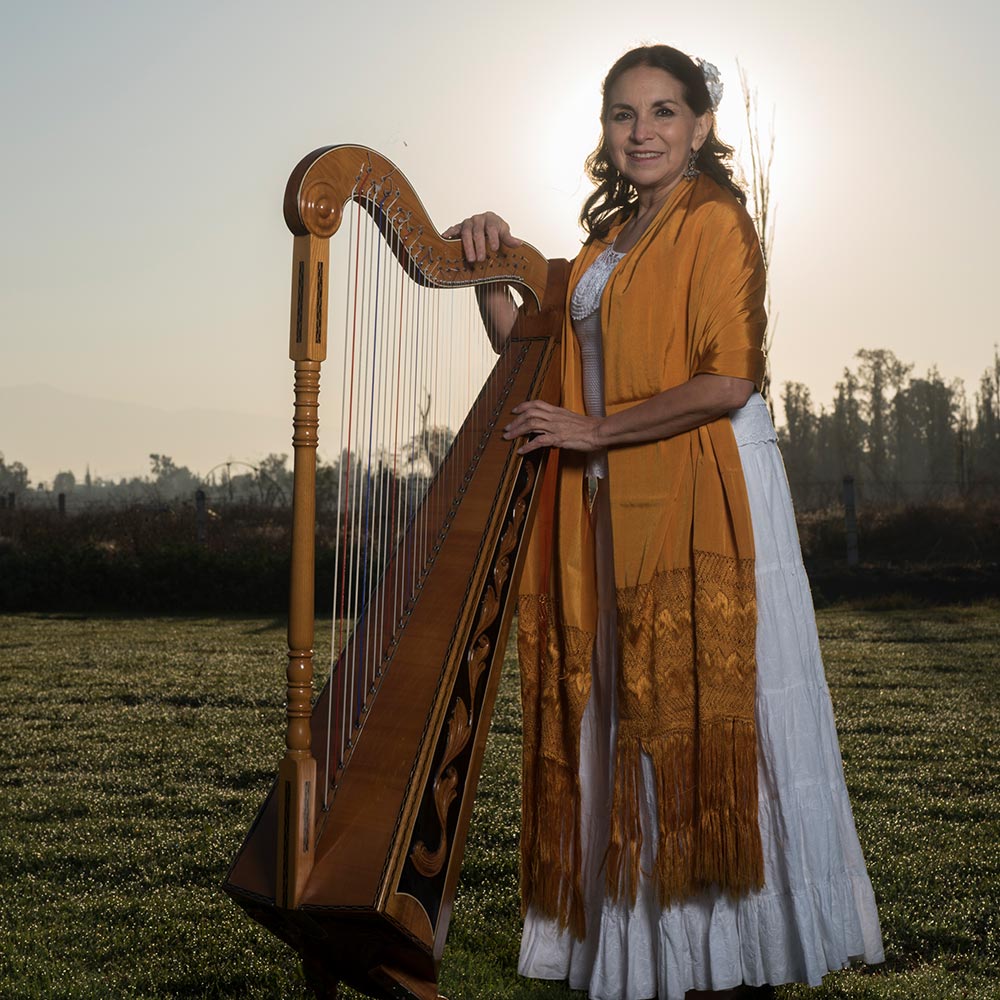
Adriana Cao Romero Alcalá: Harp and vocals
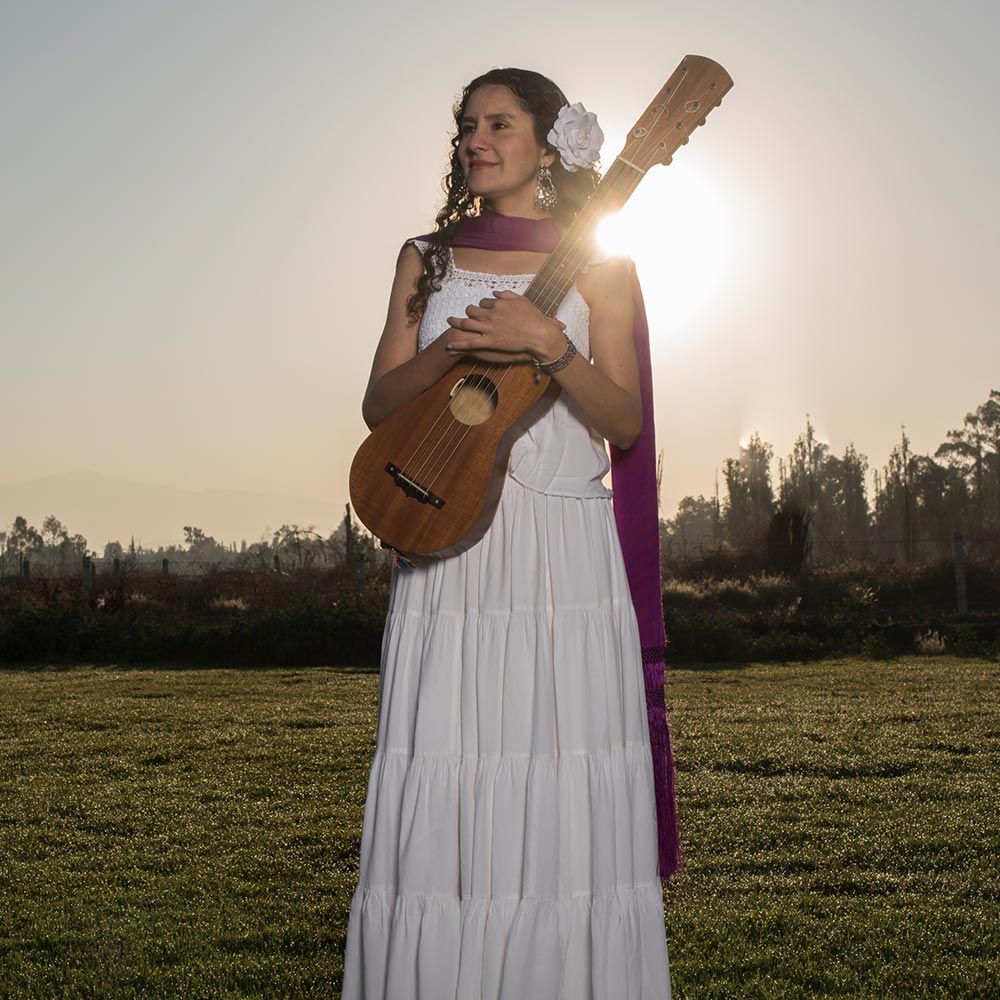
Raquel Palacios Vega: Jarana and vocals
Born in the port city of Veracruz, her musical formation began when she was merely a child. Her passion and tenacity for playing the jarocha harp have positioned her as a reference point within the execution of this instrument. Her teachers include Pánfilo Valerio, Nicolás Sosa and Andrés Alfonso Vergara, amongst others. Adriana cofounded Caña Dulce y Caña Brava in 2007, and has formed part of important son jarocho groups such as Zacamandú, Mono Blanco and Chuchumbé. She has colaborated with projects such as Tembembe, Los Otros and with artists El Negro Ojeda, Geo Meneses and Lila Downs. In 2011, the IV Festival de la Décima Guillermo Cházaro Lagos in Mexico City honored her for her trajectory and musical career.
Native of Boca de San Miguel, municipality of Tlacotalpan, Veracruz. She is a distinguished singer and jaranera, born into one of the most respected dynasties of popular mexican music: the Vega family. Cofounder of Caña Dulce y Caña Brava in 2007, she has lent her voice and talent to diverse musical projects such as Los Utrera and Son de Madera, and she has collaborated with Moy Monteson, Ernesto Anaya and Geo Meneses, amongst other artists. She has actively formed part of the musical group Los Vega since 1998. And in 2012, Raquel, alongside her family, received the National Prize of Sciences and Arts for the cultural contributions of the Vega and Utrera families.
Born in Mexico City, she began her formation in music and dance from an early age, studying in Mexico, Guinea, Canada and the United States. Violeta is known for her dance style that is both powerful and elegant. Over the years, she has formed part of the artistic projects Tamakán, Maíz Negro and Los Utrera, in the latter of which she spent 10 years becoming deeply inmersed in the cultural traditions of the sotavento region. Currently, she is a cultural producer, band member of Caña Dulce y Caña Brava since 2013, and cast member in Pachuquísmo (dance project based in San Francisco, CA, USA).
Born and raised in Austin, TX, USA. In 2010, she encountered son jarocho music for the first time. Since then, she has been an avid student of the traditional music of the sotavento region of Veracruz, participating in community fandangos in the southern region of the state and learning directly from members of the Vega family, Baxin family and the Altepee Collective. With persistence, she embraced the guitarra grande, a bass instrument not commonly played by a woman, that she plays with charm and strength. Anna currently lives in Mexico City and plays in Leoneras y Vozarronas and Lalo Jaranas y el Colectivo Fandanguero. She has been a member of Caña Dulce y Caña Brava since 2016.
Evelin Acosta is a decimista (poet specializing in the 10 line poetic form known as decima espinela) and improvisor from Loma Bonita, Oaxaca. Since 2010, she has been an active participant and promoter of the decima espinela oral tradition in Mexico. She has shared the stage and engaged in poetic dialog with respected versadores such as Tomasita Quiala, Alexis Díaz Pimienta, Arcadio Camaño and Emiliano Sardiñas. In 2012, she was the first woman originating from the Sotavento region, decimista, and fandanguera (one who frequently participates in the traditional community festivities of the Sotavento known as fandangos) to preside over the Guelaguetza festivities in Oaxaca, and in 2020, she won the Decima Popular contest in the state of Veracruz.
With the passing of time, the consistent search to expand, diversify and enrich the sound of the group has carried Adriana and Raquel to share the project with different musicians, in particular with women. Consequently, the following musicians have permanently integrated themselves into the ensemble:
Violeta Romero Granados: Jarana, vocals and zapateado
In 2014, Violeta arrived to contribute the beauty and strength of the percussion through the zapateado (percussive dance) and the quijada (horse jaw), as well as her voice and skill for playing the jarana primera.
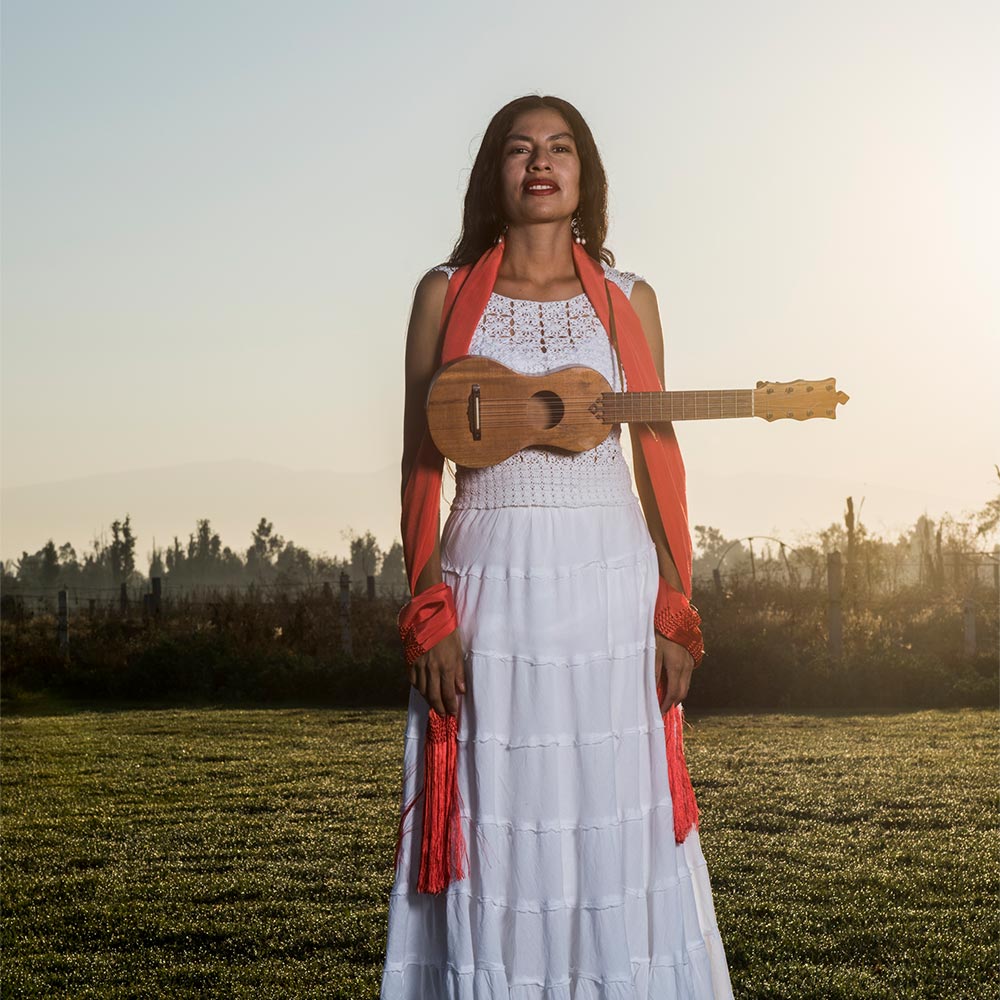
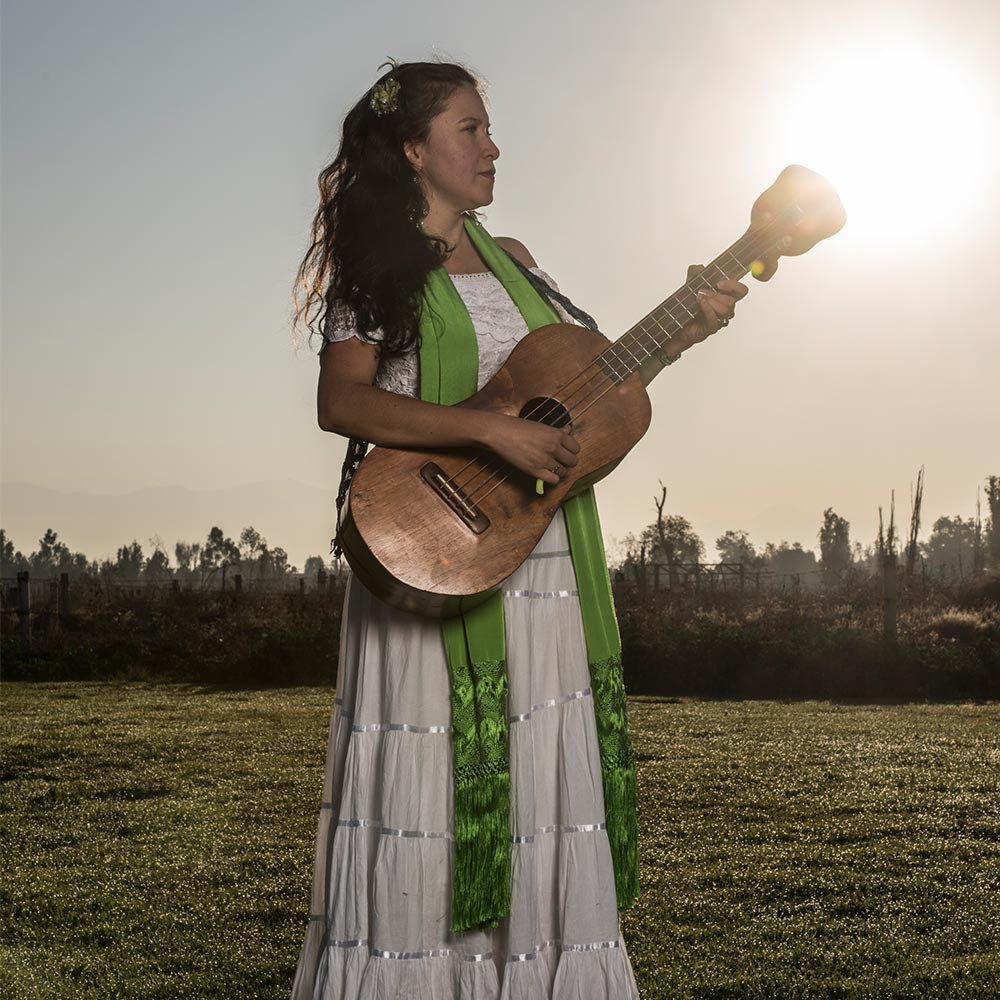
Anna Arismendez Gómez: Guitarra grande and vocals
In 2016, Anna entered the group, contributing to the polychromy of the ensemble, adding the substantial, rhythmic lines of the bass with her guitarra grande or leona, and sharing the strength of her voice.
Evelin Acosta López: Poetry and improvisation
Since 2018, Evelin, decimista (poet specializing in the 10 line poetic form known as decima espinela) from Loma Bonita, Oaxaca, collaborates with the group from time to time as a special guest, sharing the brilliance of her poetic creation, both in written and improvised verse known as repentismo.
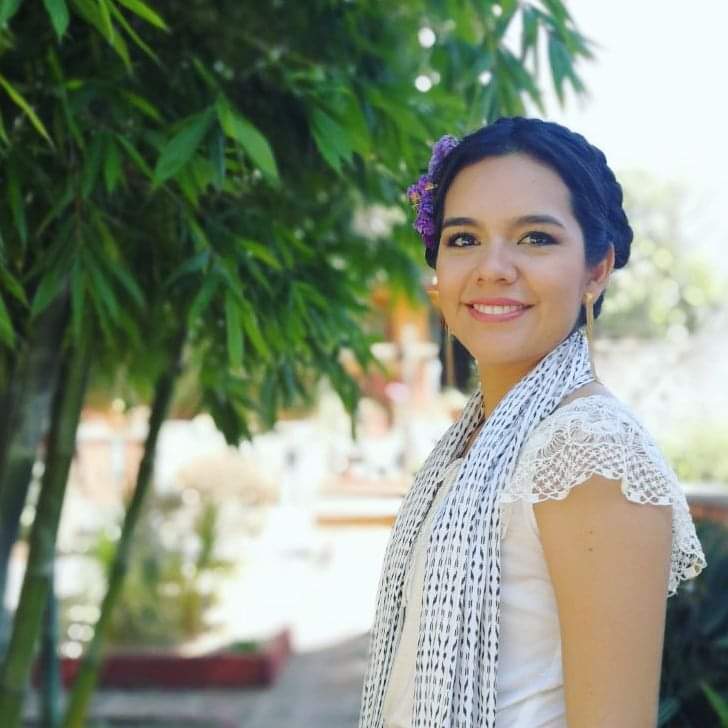
With the passing of time, the consistent search to expand, diversify and enrich the sound of the group has carried Adriana and Raquel to share the project with different musicians, in particular with women. Consequently, the following musicians have permanently integrated themselves into the ensemble:
Violeta Romero Granados: Jarana, vocals and zapateado
In 2014, Violeta arrived to contribute the beauty and strength of the percussion through the zapateado (percussive dance) and the quijada (horse jaw), as well as her voice and skill for playing the jarana primera.

Anna Arismendez Gómez: Guitarra grande and vocals
In 2016, Anna entered the group, contributing to the polychromy of the ensemble, adding the substantial, rhythmic lines of the bass with her guitarra grande or leona, and sharing the strength of her voice.

Evelin Acosta López: Poetry and improvisation
Since 2018, Evelin, decimista (poet specializing in the 10 line poetic form known as decima espinela) from Loma Bonita, Oaxaca, collaborates with the group from time to time as a special guest, sharing the brilliance of her poetic creation, both in written and improvised verse known as repentismo.

Caña Dulce y Caña Brava has had the fortune of sharing their musical offerings in several mexican states and in various countries worldwide, representing the culture of the sotavento of Veracruz in Turkey, South Africa, Canada, South Korea, Jamaica, Guyana, the United States, Venezuela, Denmark, Portugal, France, etc.. This has permitted them to meet and exchange with a great diversity of artists, allowing them to discover several similarities in the determination of other women worldwide to claim and defend activities within their own cultures and traditions.
The group has collaborated in concerts and recordings with several artists who are considered representatives of mexican music, enriching their interpretations of the sones from Veracruz and helping to expose this musical genre to new, diverse audiences. Such artists include Lila Downs, María Inés Ochoa, La Marisoul y La Santa Cecilia, amongst others.
They have recorded the following albums, both of which were put out by the record label Fonarte Latino:
Raíz y Canto in 2014, when coincidentally three of the band members carried “la luz en su vientre” (“light in their wombs”, i.e. were pregnant) at the time of its recording. For this reason, within the texts of the CD booklet, there is a mention that “14 sones and 3 babies have been born”. This CD was recorded in the traditional form in which sones jarochos are interpreted, musically speaking, but with a clear vision and new contribution in the selection of its verses.
In 2019, several years in the making, Caña Dulce y Caña Brava released the album Acentos. In this CD, one notes that the group has achieved a more clearly defined style, allowing themselves more liberty in the musical arrangements, the instrumentation, and in the selection of poetry.
Currently, the artists of Caña Dulce y Caña Brava are working on the production of their third album, continually studying and sharing their knowledge of son jarocho in workshops and seminars, while maintaining other activities not directly related to music.
In the future, they hope to continue sharing this musical genre with broader audiences, as well as to create an atmosphere which promotes the inclusion of children and youth, encouraging learning, creation and the spread of the music and dance of the sotavento region both within and beyond its cultural context and traditional festivity: el fandango.
